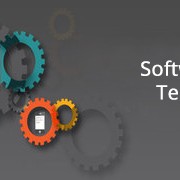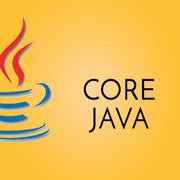Description
What is Data Science?
Data science is a field of providing meaningful information based on large amounts of complex data. Data science, or data-driven science, combines different fields of work in statistics and computation in order to interpret data for the purpose of decision making.
Why Data Science?
The new-found love for data science in today’s computing world isn’t unjustified. Ranked as the hottest job on offer in the coming years by Harvard Business Review.
The fastest-growing roles are Data Scientists and Advanced Analysts, which are projected to see demand spike by 28% by 2020.
Who is a Data Scientist?
Data Scientists are “Part analyst, Part artist”.
The literal meaning for a data scientist is who practised and acquired a good amount of knowledge in data science course. ?
Someone who gained knowledge and skills in analytics, computer science, mathematics, statistics, data visualisations and communication as well as business and strategy.
Why so much demand for Data Science?
The below viz explains all about how much demand and shortage of skills is increasing year on year.

About Data Science ?
Data Science Training lets you gain expertise in Machine Learning Algorithms like K-Means Clustering, Decision Trees, Random Forest, and Naive Bayes using Python. Data Science Training encompasses a conceptual understanding of Statistics, Text Mining and an introduction to Deep Learning. Throughout this Data Science Course, you will implement real-life use-cases on Media, Healthcare, Social Media, Aviation and HR.
The following topics will be covered as part of Data Science with Python Training.
1. Introduction to Python
Why Python
Introduction to Python
Download Python
Python 2 vs 3
Development Environment
Data Types
Python Statements
Loops
List Comprehension
Methods & Function
Python Libraries
Git & GitHub
Python : Hands-On
Extra Resources
Assignment
2. Statistics
What is Statistics
Areas of Statistics
Statistical Jargons
Sampling
Data Types in Statistics
Measures of Central tendency
Measures of Dispersion
Chebyshev Theorem
Covariance
Correlation
Collinearity
Probability
Hypothesis Testing
Extra Resources
Assignment
3. Introduction to Data Science
The need of Data Science
Data Science Domains
What is Data Science
Lifecycle of Data Science
Data Science Case Study
Types of DS Problems
Exploratory Data Analysis
Demo – EDA
Missing Value Analysis
Demo – Missing Value Analysis
Outlier Analysis
Demo – Outlier Analysis
Extra Resources
Assignment
4. Exploratory Data Analysis
Feature Selection
Importance of Feature Selection
Feature Selection Methods
Feature Selection – Demo
Univariate Selection – Demo
Feature Importance – Demo
Correlation Matrix – Demo
Dimensionality Reduction Techniques
Dimensionality Reduction – Demo
Principal Component Analysis
PCA – Demo
Feature Scaling
Why Feature Scaling ?
How to scale features ?
When to scale features ?
Extra Resources
Assignment
5. Introduction to Machine Learning
What is Machine Learning
How does it work
Types of Machine Learning
Supervised Machine Learning
Unsupervised Machine Learning
Supervised vs Unsupervised ML
Decision Trees
Build DT using ID3
Decision Trees Demo
Random Forests
Decision Trees vs Random Forests
Why Random Forests ?
Creating a Random Forests
Random Forests Demo
Extra Resources
Assignment
6. Advanced Machine Learning
Statistical Models
ML vs Statistical Models
Regression
Types of Regression
Linear Regression
Method of Least Squares
R-square Method – Goodness of Fit
Logistic Regression
KNN
Naïve Bayes
Evaluation Metrics
Classification Accuracy
Logarithmic Loss
Confusion Matrix
Area Under Curve
Precision and Recall
F1 Score
Mean Absolute Error & Mean Squared Error
Extra Resources
Assignment
7. Natural Language Processing
Introduction to NLP
Components of NLP
Benefits of NLP
NLP Libraries
NLTK
Synonyms & Antonyms
Stemming
Lemmatization
Word Embeddings
Part-of-Speech
Named Entity Recognition
Sentiment Analysis
Semantic Text Similarity
Language Identification
Text Summarisation
Dealing with Text Data
NLP – Demo
Extra Resources
Assignment
8. Time Series
Why Time Series Analysis ?
What is Time Series
Components of Time Series
When not to use Time Series ?
What is Stationarity ?
ARIMA Model
Demo : Forecast Future
Extra Resources
Assignment
9. Deploying ML Models
Deploy ML Models using Flask
Installing Libraries
ML Algorithm and Data
Code & Output
Pre-Processing the dataset
Fitting the Model
Flask
HTML Form
Flask Script
Run Flask Application
Predicting the Income Value
Folder Structure
Demo
Extra Resources
Assignment
10. Introduction to Deep Learning
Introduction to Deep Learning
Drawbacks of ML
Deep Learning Use Case
Applications
Perceptron
Activation Functions
Hands-On
Extra Resources
Assignment
Pre-requisites :
Basic statistics knowledge and any computer programming language is preferred.
Duration & Timings :
Duration – 30 Hours.
Training Type: Online Live Interactive Session.
Faculty: Experienced.
Access to Class Recordings.
Weekday Session – Mon – Thu 8:30 PM to 10:30 PM (EST) – 4 Weeks. July 22, 2024.
Weekend Session – Sat & Sun 9:30 AM to 12:30 PM (EST) – 5 Weeks. August 10, 2024.
DATA SCIENCE REVIEWS
For More Reviews
Inquiry Now Discount Offer
USA: +1 734 418 2465 | India: +91 40 4018 1306
AI | Data Science | Machine Learning Blogs
What is Anomaly Detection and how it Benefits Businesses
What is Artificial Intelligence ?
Machine Learning and Artificial Intelligence
Natural Language Processing Applications
Artificial Intelligence – A Great Way to Improve Data Handling and Processing
Machine Learning and Pattern Recognition
Machine Learning vs Deep Learning: Here’s what you must know!
Machine Learning is the future: Here’s everything you must know























 +91 40 4018 1306
+91 40 4018 1306 +1 734 418 2465
+1 734 418 2465 info@learntek.org
info@learntek.org